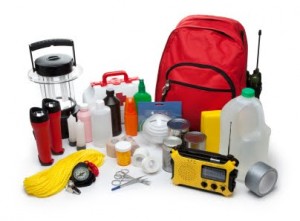National Incident Management System (NIMS)
The National Incident Management System (NIMS) defines preparedness as “a continuous cycle of planning, organizing, training, equipping, exercising, evaluating, and taking corrective active in an effort to ensure effective coordination during incident response.” The cycle is one element of a broader system to prevent, respond to, recover from, and mitigate against natural disasters, acts of terrorism, and other man-made disasters.
The Components of the Preparedness Cycle Include:
- Plan
- Organize & Equip
- Train
- Exercise
- Evaluate & Improve

1. Plan
Planning makes it possible to manage the entire life cycle of a potential crisis. Strategic and operational planning establishes priorities, identifies expected levels of performance and capability requirements, provides the standard for assessing capabilities and helps stakeholders learn their roles. The planning elements identify what an organization’s Standard Operating Procedures (SOPs) or Emergency Operations Plans (EOPs) should include for ensuring that contingencies are in place for delivering the capability during a large-scale disaster.
The National Response Framework presents the guiding principles that enable all response partners to prepare for and provide a unified national response to disasters and emergencies – from the smallest incident to the largest catastrophe. The Framework establishes a comprehensive, national, all-hazards approach to domestic incident response.
2. Organize & Equip
Organizing and equipping provide the human and technical capital stock necessary to build capabilities and address modernization and sustainability requirements. Organizing and equipping include identifying what competencies and skill sets people should possess and ensuring an organization has the correct personnel. Additionally, it includes identifying and acquiring standard equipment an organization may need to use in times of emergency.

Resources & Programs
3. Training
Training provides first responders, homeland security officials, emergency management officials, private and non-governmental partners, and other personnel with the knowledge, skills, and abilities needed to perform key tasks required during a specific emergency situation.
4. Exercise
Exercises enable entities to identify strengths and incorporate them within best practices to sustain and enhance existing capabilities. They also provide an objective assessment of gaps and shortfalls within plans, policies and procedures to address areas for improvement prior to a real-world incident.
5. Evaluate & Improve
The last phase of the Preparedness Cycle is evaluation and improvement. During this phase, organizations collect lessons learned, develop improvement plans, and track corrective actions to address gaps and deficiencies identified in exercises or real-world events. FEMA’s Lessons Learned and Continuous Improvement Program (LL/CIP) brings together the collective evaluation and improvement efforts of federal, state and local emergency management and homeland security professionals to continuously improve and strengthen preparedness and homeland security at the federal, state and local levels.

